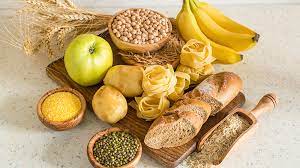Deoxyribonucleic acid (DNA) is a polynucleotide chain composed of deoxyribonucleotides. They are the principal genetic material of living organisms.
Deoxyribonucleotides are formed by the combination of Deoxyribose sugar and four nitrogen bases Adenine (A), Guanine (G), Thymine (T) and Cytosine (C) and phosphoric acid.
Occurrence: DNA is present in nucleus of eukaryotic cells and small amount in mitochondria and plastids. They are scattered in the cytoplasm of prokaryotic cell. Nuclear DNA is associated with histone protein. DNA present in prokaryotes and cell organelles is not associated with histone protein thus are naked.
Structure of DNA
The structure of DNA was proposed by James Dewey Watson and Francis Harry Compton Crick in 1953. They were also awarded with Novel Prize in 1962 for the structure.
The structure of DNA as proposed by them are included in the points given below:

- DNA molecule consists of two polynucleotides that form double helix around the central axis.
- The helix is right handed (coils from right to left)
- The two polynucleotide chain are coiled to form alternating major and minor groove.
- The polynucleotide chains are made up of successive deoxyribonucleotides held together by phosphodiester bond.


- The phosphodiester bond link 5th carbon of deoxyribose sugar of one deoxyribonucleotide with 3rd carbon of deoxyribose sugar of next nucleotide.
- The distance between two chains is 20 A°
- One turn of helix measures 34A°
- Ten nucleotides found in one complete turn. So, the distance between two nucleotide is 3.4 A°
- Two strands are antiparallel i.e. one strand run in 5' to 3' direction and other in 3' to 5' direction.
- The sugar phosphate form backbone of each strand.
- Two polynucleotide chain are held together by weak hydrogen bonds between specific purines Adenine (A) and Guanine (G) of one strand and specific pyrimidine Cytosine (C) and Thymine (T) of other strand.
- Adenine (A) is linked with Thymine (T) by two hydrogen bonds and Guanine (G) is linked with Cytosine (C) by three hydrogen bonds.
- Hence two strands are complementary not identical. The presence of particular nitrogen base in one strand determines the presence of nitrogen bases in other strand.
Importance of DNA
- It is the principal genetic material which carries genetic information from generation to generation.
- It controls all the biological activities of a cell. For example: protein synthesis.
- It can replicate and form it's own carbon copies.
- It can synthesise RNA by the process of transcription.
- Mutation is caused by changes in sequence of nitrogen bases in sequence of nitrogen bases in DNA.
- It creates variety in population by causing recombination through crossing over.




